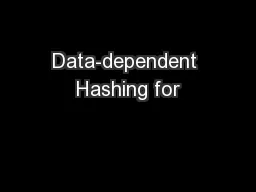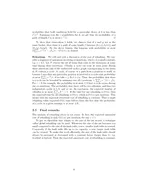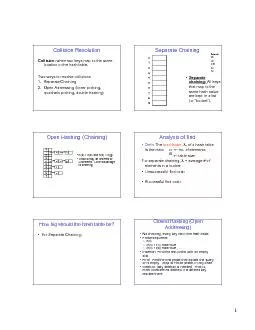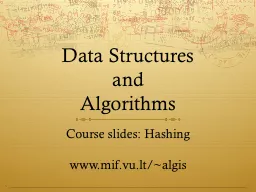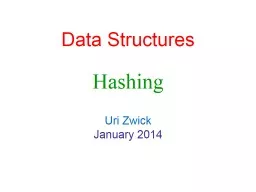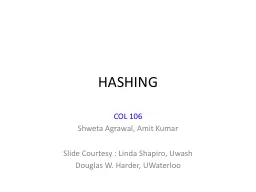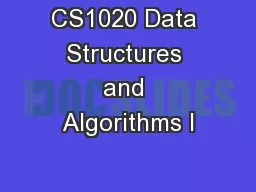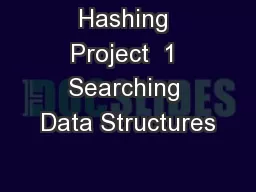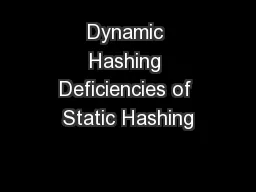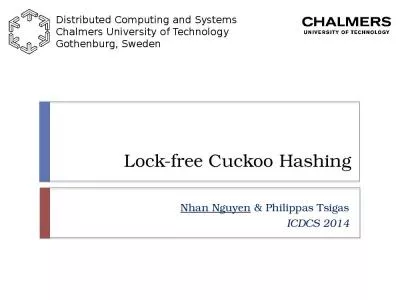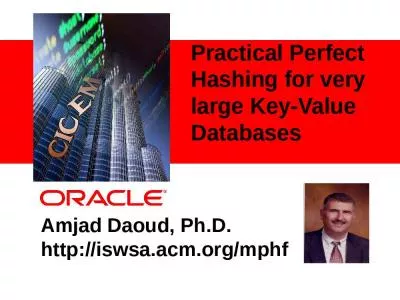PPT-Data-dependent Hashing for
Author : lindy-dunigan | Published Date : 2017-08-09
Similarity Search Alex Andoni Columbia University Nearest Neighbor Search NNS Preprocess a set of points Query given a query point report a point with the
Presentation Embed Code
Download Presentation
Download Presentation The PPT/PDF document "Data-dependent Hashing for" is the property of its rightful owner. Permission is granted to download and print the materials on this website for personal, non-commercial use only, and to display it on your personal computer provided you do not modify the materials and that you retain all copyright notices contained in the materials. By downloading content from our website, you accept the terms of this agreement.
Data-dependent Hashing for: Transcript
Download Rules Of Document
"Data-dependent Hashing for"The content belongs to its owner. You may download and print it for personal use, without modification, and keep all copyright notices. By downloading, you agree to these terms.
Related Documents

